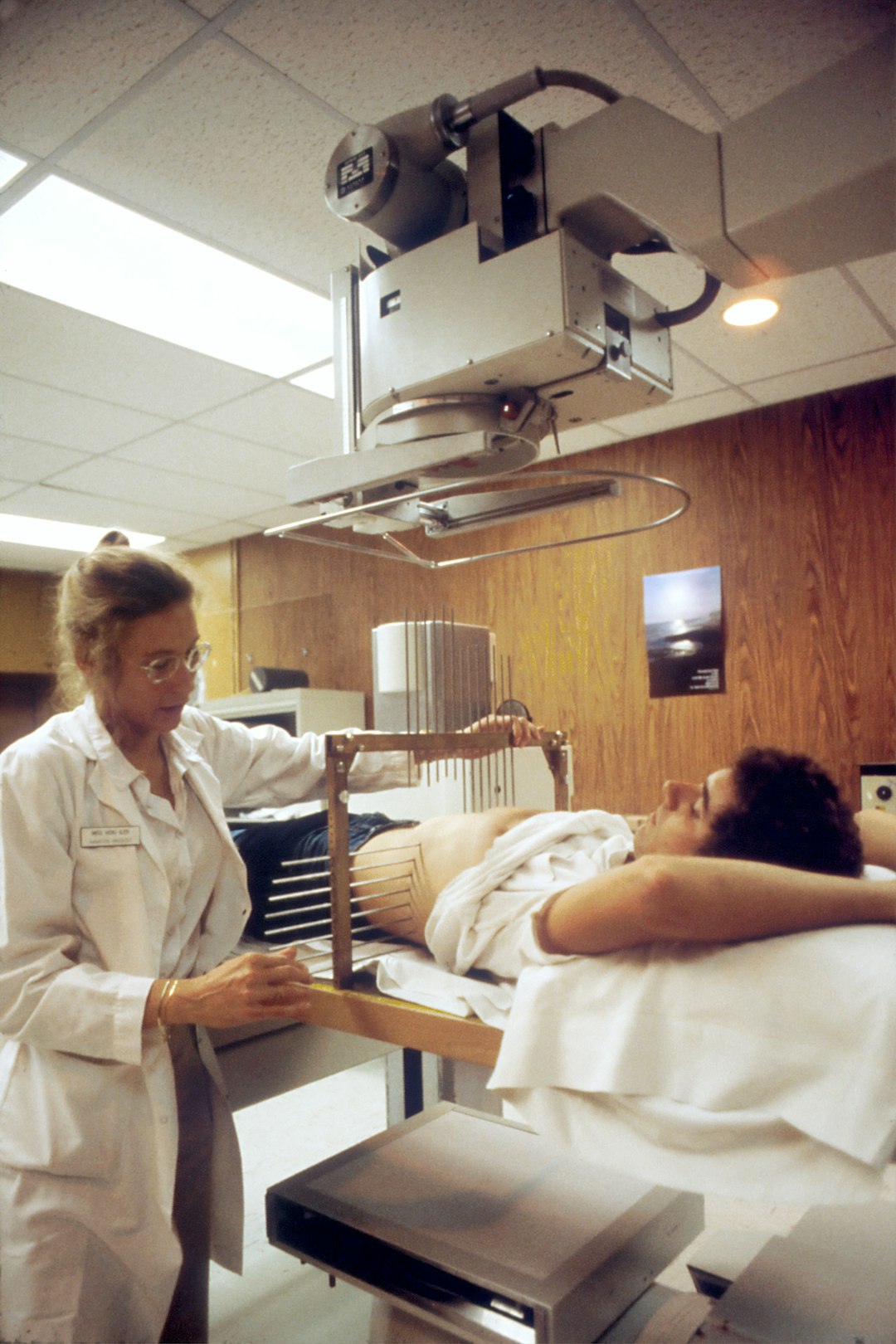Psychodynamic Therapy delves into the intricate interplay between your past experiences and present behaviors. By exploring the unconscious mind, this therapeutic approach reveals how early relationships and formed defense mechanisms influence your current emotional landscape. Throughout this journey, concepts like transference and countertransference emerge, highlighting the deep-rooted connections between therapist and client. Understanding these dynamics enhances self-awareness, paving the way for personal growth and healing. In this blog post, we will explore the core principles of Psychodynamic Therapy and how it can significantly benefit individuals seeking a deeper understanding of their emotions and behaviors.
Overview of Psychodynamic Therapy
Psychodynamic Therapy is a therapeutic approach rooted in the theories of Sigmund Freud and his successors. This approach centers around the idea that our unconscious mind significantly influences our thoughts, feelings, and behaviors. By exploring these unconscious processes, Psychodynamic Therapy aims to foster self-awareness and emotional growth.
Key Features of Psychodynamic Therapy:
- Focus on the Unconscious: The therapy delves into unconscious motivations that shape an individual’s actions.
- Exploration of Past Experiences: It emphasizes how past relationships and experiences impact current behavior.
- Therapeutic Relationship: The bond between therapist and client becomes a crucial tool for understanding interpersonal dynamics.
Comparison with Other Approaches
| Aspect | Psychodynamic Therapy | Cognitive Behavioral Therapy (CBT) |
|---|---|---|
| Focus | Unconscious mind | Conscious thoughts and behaviors |
| Duration | Long-term | Short to medium-term |
| Techniques | Free association, dream analysis | Structured assignments, skills training |
| Goals | Insight and self-awareness | Behavior change, symptom relief |
In summary, Psychodynamic Therapy provides an in-depth exploration of the psychological forces that contribute to emotional difficulties. By addressing these underlying issues, clients often gain a clearer understanding of themselves and are better equipped to make meaningful changes in their lives.

Key Concepts in Psychodynamic Therapy
Psychodynamic Therapy revolves around several key concepts that form its foundation. Understanding these principles helps clarify how this therapeutic approach operates. Here are the core ideas:
- Unconscious Mind: A central tenet of Psychodynamic Therapy is that much of our behavior is influenced by unconscious thoughts and feelings. By bringing these to awareness, individuals can better understand their motivations.
- Defense Mechanisms: These are psychological strategies used to cope with reality and maintain self-image. Common mechanisms include:
- Repression: Pushing painful memories out of conscious awareness.
- Denial: Refusing to accept reality or facts.
- Projection: Attributing one’s own unacceptable feelings to others.
- Transference: This occurs when clients project feelings about significant figures in their lives onto the therapist. It provides insight into interpersonal dynamics and unresolved conflicts.
- Resistance: Clients often resist discussing certain topics, which can signify an important area for exploration in therapy.
- Determinism: Psychodynamic Therapy suggests that past experiences, particularly from childhood, shape present behaviors and relationships.
By incorporating these key concepts, Psychodynamic Therapy reveals how deep-seated emotions and experiences influence current behaviors. Ultimately, this understanding fosters healing and personal growth, making it a valuable approach for many seeking help and clarity.
The Role of the Unconscious Mind
In Psychodynamic Therapy, the unconscious mind plays a pivotal role in understanding human behavior and emotional responses. This aspect of the mind influences our thoughts, feelings, and actions, often without our conscious awareness. Here are some key points about the unconscious mind’s role in Psychodynamic Therapy:
- Hidden Influences: The unconscious holds memories, desires, and fears that shape how we perceive ourselves and interact with others.
- Dream Analysis: Therapists often explore dreams as they can reveal significant insights into the unconscious, including unresolved conflicts and hidden motives.
- Symbolic Expressions: Unconscious thoughts may manifest through slips of the tongue or metaphors, offering a window into deeper emotional issues.
Comparison of Conscious vs. Unconscious Mind
| Feature | Conscious Mind | Unconscious Mind |
|---|---|---|
| Awareness | Active awareness of thoughts | Lacks direct awareness |
| Content | Logic, reasoning, and decision-making | Repressed memories, desires, conflicts |
| Influence on Behavior | Directly influences choices | Indirectly shapes behaviors |
Understanding the unconscious mind is crucial in Psychodynamic Therapy as it helps uncover underlying issues that drive maladaptive behaviors. By illuminating these hidden elements, clients can gain awareness and begin resolving their emotional struggles, leading to healthier relationships and improved emotional well-being.
Transference and Countertransference
Transference and countertransference are pivotal concepts in Psychodynamic Therapy, influencing the therapeutic process significantly. Understanding these terms enhances both therapist and client awareness during treatment.
Transference refers to the phenomenon where clients project feelings, desires, and expectations from past relationships onto their therapist. This creates a unique dynamic, allowing clients to explore unresolved emotions. For instance:
- Past Relationships: Clients might treat the therapist as a parental figure, reflecting unresolved childhood issues.
- Emotional Responses: A client may feel overwhelming affection or hostility towards the therapist, mirroring their previous interactions.
On the flip side, countertransference occurs when therapists project their own feelings and experiences onto the client. This reaction can also be beneficial, but can lead to challenges if not managed properly. Key aspects include:
- Therapist’s Bias: A therapist might find themselves overly sympathetic or defensive, influenced by their personal history.
- Impact on Treatment: Unexamined countertransference can cloud judgment, affecting the therapy’s effectiveness.
| Concept | Definition | Examples |
|---|---|---|
| Transference | Client projects feelings from past onto therapist | Client sees therapist as a parent |
| Countertransference | Therapist’s emotional reaction to client | Therapist feels overly protective |
In Psychodynamic Therapy, recognizing and working through these dynamics fosters deeper self-awareness and promotes healing, making these concepts crucial for both clients and therapists.

The Importance of Early Relationships
Early relationships form the bedrock of our emotional health and personal development. Within the framework of Psychodynamic Therapy, these formative connections significantly shape how we perceive ourselves and interact with others throughout life.
Key Aspects of Early Relationships:
- Attachment Styles: Our first bonds, particularly with primary caregivers, help establish our attachment styles, which influence our future relationships. For example:
- Secure Attachment: Leads to healthy relationships and effective communication.
- Insecure Attachment: Can result in anxiety, avoidance, or fear in relationships.
- Internal Working Models: These are mental representations of self and others formed during childhood. They affect:
- Trust in others
- Expectations in relationships
- Responses to intimacy
- Patterns of Behavior: Early relationships set the stage for recurring patterns in adult behavior. People often reenact childhood dynamics in their romantic and social interactions, which Psychodynamic Therapy aims to uncover and resolve.
Why Early Relationships Matter:
- Emotional Regulation: Positive early experiences help individuals learn to regulate their emotions effectively.
- Conflict Resolution: Learning how to navigate conflicts in early relationships teaches valuable skills for adult interactions.
In conclusion, Psychodynamic Therapy emphasizes the critical influence of early relationships, helping individuals recognize how these experiences impact current behaviors and emotional responses. Understanding these early dynamics can lead to transformative personal growth and healthier relationships.
Defense Mechanisms Explained
Defense mechanisms play a crucial role in Psychodynamic Therapy, acting as psychological strategies that protect individuals from anxiety or uncomfortable emotions. These subconscious techniques help people cope with stressors and avoid facing painful feelings or thoughts directly.
Common Defense Mechanisms
- Repression: Involves unconsciously blocking unacceptable thoughts from awareness. For instance, a person who experienced a traumatic event may not remember it at all.
- Denial: Refusing to accept reality or facts, maintaining a false narrative to avoid facing the truth.
- Projection: Attributing one’s own unacceptable feelings or thoughts to someone else. For example, a person who feels inadequate may accuse others of being judgmental.
- Rationalization: Justifying behaviors or thoughts with logical explanations, rather than facing the emotional consequences.
- Displacement: Redirecting emotions from a threatening object to a safer outlet, like venting frustrations on a loved one instead of the actual source.
Understanding the Impact
In Psychodynamic Therapy, recognizing these defense mechanisms allows both the therapist and the client to:
- Understand underlying issues.
- Foster awareness of how past experiences shape current behaviors.
- Work through repressed emotions to promote healing.
Ultimately, by addressing and understanding these defense mechanisms, Psychodynamic Therapy aids individuals in resolving past conflicts and moving towards emotional well-being.
How Past Experiences Shape Current Behavior
Understanding how past experiences influence current behavior is crucial in Psychodynamic Therapy. This therapeutic approach emphasizes that unresolved conflicts and traumatic events from childhood can manifest in adult life, leading to maladaptive behaviors and emotional difficulties. Here are some key insights into this connection:
- Childhood Development: Early experiences, particularly those related to attachment and bonding, create internal frameworks that shape personality and behavior. For instance, consistent nurturing can foster self-esteem, while neglect can lead to feelings of unworthiness.
- Repressed Memories: Psychodynamic Therapy explores how repressed memories influence choices and relationships. Events that individuals may not consciously recall can still affect their behaviors and relationships.
- Emotional Patterns: Past experiences often create emotional patterns that individuals unconsciously repeat. This repetition compulsion can lead to similar conflicts in adult relationships.
- Conflict Resolution: By addressing these past experiences, clients learn to recognize and alter negative behaviors, fostering healthier relationships and coping mechanisms.
Key Points to Remember
| Aspect | Description |
|---|---|
| Influence of childhood | Shapes emotional responses and behaviors |
| Role of repressed memories | Affects current perceptions and actions |
| Repetition of patterns | Leads to recurring relational conflicts |
In summary, Psychodynamic Therapy provides valuable insights into how our histories mold who we are today, offering a path to healing and self-understanding.

Techniques Used in Psychodynamic Therapy
Psychodynamic Therapy employs various techniques designed to uncover and explore the unconscious influences on a person’s thoughts and behaviors. These techniques help clients gain insight into their emotions and experiences. Here are some of the most commonly used methods:
- Free Association: Clients are encouraged to speak freely about their thoughts, feelings, and memories without censorship. This technique aims to reveal hidden connections and underlying issues.
- Dream Analysis: Dreams serve as a window into the unconscious mind. Therapists help clients interpret their dreams to understand unresolved conflicts or desires that may affect their current behavior.
- Interpretation: Therapists offer insights or interpretations of the client’s thoughts and behaviors, helping to illuminate patterns rooted in the past.
- Transference: Clients may project feelings about important past figures onto the therapist. Recognizing and exploring these feelings can enhance understanding of relationships and emotional patterns.
- Countertransference: Therapists monitor their own emotional reactions to the client, which can provide crucial insights into the client’s issues.
- Resistance: Analyzing client resistance to certain topics can uncover significant emotional developments and unprocessed experiences.
These techniques collectively foster a deeper relationship between the therapist and client, enabling meaningful exploration of the client’s inner world. Ultimately, Psychodynamic Therapy helps individuals uncover their past, promoting healing and personal growth.
Benefits of Psychodynamic Therapy
Psychodynamic Therapy offers numerous advantages for individuals seeking deeper self-understanding and emotional healing. Here are some key benefits:
- Enhanced Self-Awareness: By exploring unconscious thoughts and feelings, clients gain insight into their behaviors and motivations, fostering personal growth.
- Improved Emotional Regulation: This therapeutic approach helps individuals identify emotional triggers and develop healthier coping mechanisms to manage anxiety and depression.
- Better Relationships: Understanding past relationships and their impact on current interactions aids individuals in forming healthier connections with others.
- Conflict Resolution: Clients learn to recognize and navigate internal conflicts that may impede their mental well-being, promoting a more balanced life.
- Long-Term Change: Psychodynamic Therapy focuses on uncovering deep-seated issues, leading to lasting transformations rather than just temporary relief from symptoms.
Moreover, individuals dealing with:
| Problem Area | How Psychodynamic Therapy Helps |
|---|---|
| Anxiety | Identifies root causes and patterns |
| Depression | Encourages expression of repressed feelings |
| Relationship Issues | Analyzes past interactions for insights |
| Self-Esteem Challenges | Aids in understanding self-image origins |
Ultimately, Psychodynamic Therapy empowers individuals to confront and understand their past, paving the way for a brighter, more emotionally fulfilling future.
Who Can Benefit from Psychodynamic Therapy
Psychodynamic Therapy offers valuable insights and healing to a diverse array of individuals. Understanding who can benefit from this therapeutic approach is essential for making an informed decision. Here are key groups that may find Psychodynamic Therapy particularly beneficial:
- Individuals with Anxiety and Depression: People who face chronic anxiety or depression often discover that exploring the underlying issues can lead to lasting resolution and relief.
- Those with Relationship Problems: If you struggle with forming or maintaining healthy relationships, Psychodynamic Therapy can help unveil the root causes that affect your connections.
- Individuals Experiencing Identity Issues: Those grappling with self-identity or self-esteem issues may find it transformative to explore their past experiences and how they shape their present self-view.
- People with Trauma Histories: Individuals who have endured traumatic experiences can find safe spaces in Psychodynamic Therapy to process their feelings and integrate their experiences.
- Professionals in High-Stress Fields: Those working in high-pressure environments may benefit from exploring the stressors influencing their work-life balance and emotional health.
In summary, anyone seeking deeper self-awareness and understanding of their past behaviors can thrive in Psychodynamic Therapy. By addressing unconscious patterns, individuals can unlock emotional barriers and foster healthier relationships moving forward.


